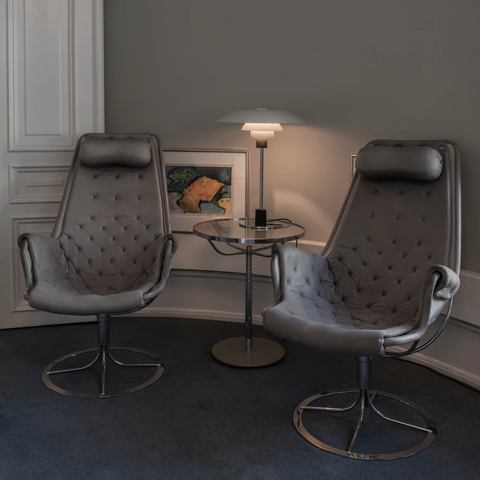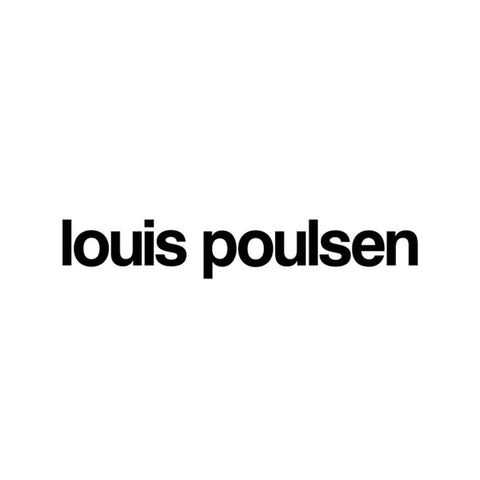


PH 4/3 Table Lamp
Poul Henningsen designed the three-shade system in 1925-1926, initially collaborating with Louis Poulsen for a Paris exhibition. This partnership lasted until Henningsen's death in 1967. He aimed to create glare-free light, direct it where needed, and produce soft shadows using incandescent bulbs.
Henningsen's three-shade system included table, floor, and wall lamps, as well as chandeliers. The lights came in various colors and sizes, with early shades made of metal and later ones of glass. Glass shades provided both downward and ambient room illumination.
Henningsen's scientific approach to lighting used the logarithmic spiral for even light distribution and glare control. Each shade reduced light equally based on its distance from the source. The PH light model numbers indicated shade sizes, with 'pure' models featuring matching top and lower shades. Hybrid models, like the PH 4/3 Table introduced in 1966, used different shade combinations to allow for lower pendant heights.
This product doesn't have any reviews yet. Be the first to bring iconic design into your home and share your thoughts!
21.6"H x 17.7"Ø, Cord Length: 96"
Light Source:
1x15W LED A19 Medium
Material:
Triangular Piece: Black, injection molded bakelite
Shades: Spun aluminum
Base: High lustre chrome plated, spun brass
Stem: High lustre chrome plated, steel
Most Louis Poulsen lighting fixtures come with a 5-year warranty. However, specific products have different coverage:
- Portable fixtures (such as table and floor lamps): 2-year warranty
- Separately purchased components (like replacement parts): 2-year warranty
Established in 1874 as a lighting manufacturer, Louis Poulsen has become one of the world's leading producers of lighting. This success is attributed to collaborations with renowned designers and architects like Arne Jacobsen, Øivind Slaatto, Poul Henningsen, and Verner Panton.



